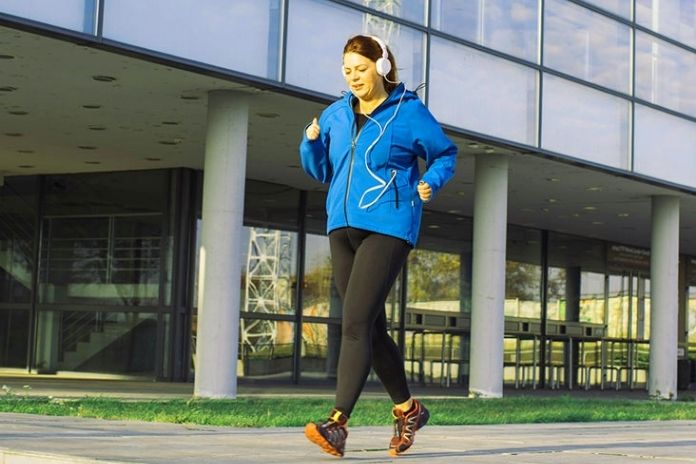Breathing is automatic but often incorrect. Not getting out of breath so early when exercising is an art that can be learned: with these tips for more endurance.
It’s no big secret: performance will also work if muscles, organs, and tissues are optimally supplied with oxygen.
Because overall fitness and athletic performance are usually limited by the lungs, not the arms, legs, or mind.
“Feeling short of breath” influences the training intensity much more than muscle fatigue. No matter how good our intentions are, as soon as we run out of breath, the fun is over.
“We think a lot about healthy nutrition, there are rules of thumb for the amount of water we should drink during physical exertion – but we hardly pay any attention to the air we breathe. That’s crazy,” says Patrick McKeown.
The Irishman, who had breathing problems himself for years, has devoted himself to this topic for years, helping asthmatics to become more fit and athletes to increase their performance.
Carbon Dioxide Helps Oxygen
“The paradox is that the amount of carbon dioxide in your blood determines how much of the oxygen you breathe in your body uses,” .
“CO2 is not, as we usually learned in school, just waste material from breathing, but the key to releasing oxygen from the red blood cells.”
Because many people breathe through their mouths, especially when they exert themselves, they over-breathe: if the CO2 concentration is too low, the oxygen remains in the blood – organs, and muscles lose out.
Breathe Better Through Your Nose
Breathing too much for short periods is not a big problem. In the longer term, however, a biochemical change occurs in the organism that leads to lower tolerance to carbon dioxide.
With this lower setpoint, the tidal volume always remains above-normal volume: the receptors in the brain are constantly stimulating respiration to get rid of the CO2, which seems to exceed the limits programmed by habituation.
As a result, you feel weaker than necessary, and your athletic performance is impaired. This does not happen with controlled breathing through the nose.
The BOLT – the Body Oxygen Level Test – reveals how efficient your breathing is. The measurement is most accurate immediately after waking up.
It would help if you had rest and a stopwatch: Breath in through your nose, calmly, for ten minutes.
Now pinch your nose with your fingers to stop breathing. As you hold your breath, carbon dioxide builds up in the blood, and before long, receptors in the brain and neck signal the respiratory muscles to breathe again to get rid of the excess.
If the timed period is less than ten seconds, your carbon dioxide tolerance is far too low. The starting value should typically be around 20 seconds for averagely trained people.
However, a BOLT value of 40 seconds is optimal. This can be done with a bit of practice.
Important: This test is not about how long you can hold your breath voluntarily but about finding the point in time at which you would habitually breathe in again.
Altitude Training Without Mountains
Higher tolerance to CO2 lets us experience the lack of airless pronunciation. The body is then able to work harder with far less effort. This is precisely what competitive athletes practice during altitude training.
Due to the decreasing air pressure at high altitudes, the body has to adapt to the lack of oxygen.
This deficiency can be simulated; no special compressed air chamber is required; this can be done during regular training or at home in the living room.
A healthy breathing pattern can be learned within a few weeks. Breathe through your nose day and night. Avoid taking deep breaths when yawning or sucking in the air when speaking. When you are at rest, you should not hear your breathing.
Practice, Practice, Practice
Habits shape people. It is difficult to discard well-practiced patterns, especially those that one hardly notices – such as breathing.
For starters, it’s enough to keep reminding yourself of nasal breathing and switch to it immediately when you try to grasp as much air as possible through your mouth during exertion.
And don’t give up! Because if you breathe properly, you have more power.
Learn To Breathe Efficiently
Warm-Up
Walk at a pace that is comfortable for you. Breathe calmly through your nose. Use your diaphragm to maintain gentle and relaxed breathing. Relax.
Increase the pace. After about a minute, exhale through your nose and hold your breath. Walk 10-30 steps without breathing.
If you feel a moderately strong urge to breathe, keep breathing (through your nose!). Walk on for 10 minutes. Hold your breath like this once a minute. Now you start your regular training.
Regeneration
To cool down, walk for five minutes and do breath-hold exercises: Exhale through your nose. Pinch your nose with your fingers to hold your breath for five seconds.
Breathe normally through your nose for 10 to 15 seconds. Repeat the exercise during the cool-down, continuing to breathe calmly and normally.
Testing
Before training, measure your BOLT value at rest as usual. You stop the time again about an hour after exercise. If the value is higher, then you have been breathing efficiently.
ALSO READ: YOGA FOR ATHLETES: THE PERFECT ADDITION TO ANY WORKOUT

